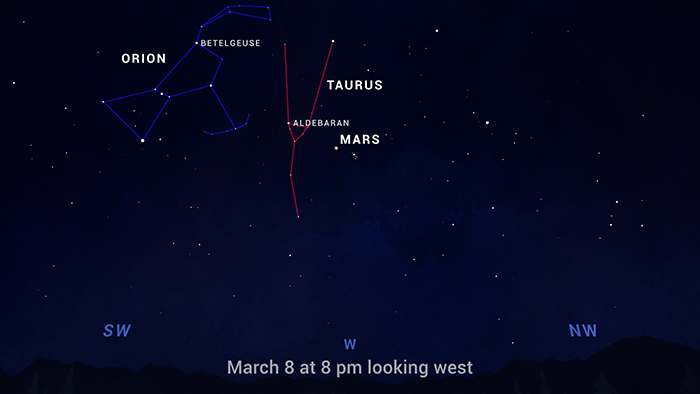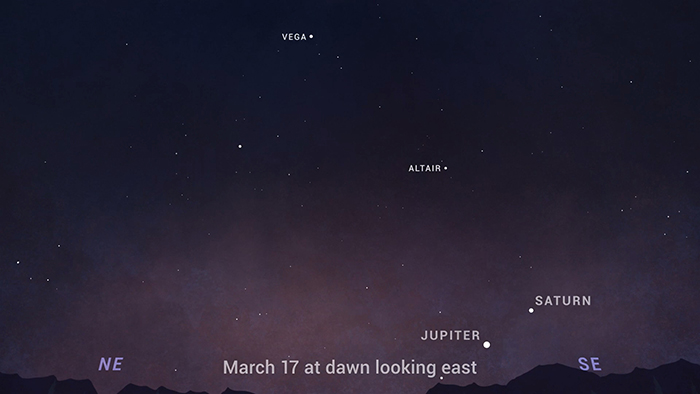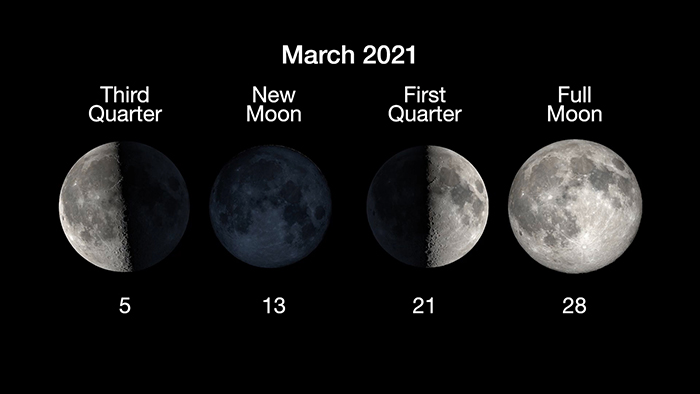Current Night Sky: March 2021
In the first week or so of March, you'll find Mars near the Pleiades star cluster high in the west in the few hours after sunset. NASA's Perseverance rover successfully landed on Mars on February 18th! And in addition to this latest surface explorer, orbiters from two other nations arrived in orbit around the Red Planet last month, making 2021 a truly international year of Mars exploration.
You may also notice a couple of other reddish objects forming a line with Mars – that is, the stars Aldebaran, which forms the angry eye of Taurus the bull, and Betelgeuse, the shoulder of Orion. And speaking of Betelgeuse, astronomers using NASA's Hubble Space Telescope and other observatories have determined the cause of the star's dimming last year was likely due to a cloud of dust ejected by the aging red giant. And while scientists think the star has moved into burning helium, instead of hydrogen, in its core, they think it's unlikely to explode in a supernova anytime soon.

Hopefully you managed to catch a glimpse of Jupiter and Saturn as they came ultra-close in their Great Conjunction in December. Not long after this, the two planets left the evening sky as they passed behind the Sun as seen from Earth. Well now the pair is back, this time as morning planets. In the second half of March, Jupiter and Saturn re-emerge as a bright pair in the pre-dawn sky. They won't be as close as in December, but they're still an absolute joy to observe. So if you're up early, grab a warm drink step outside to commune with the largest planets in our solar system.

Here are the phases of the Moon for March.

The above information is made available courtesy of NASA/JPL-Caltech.



